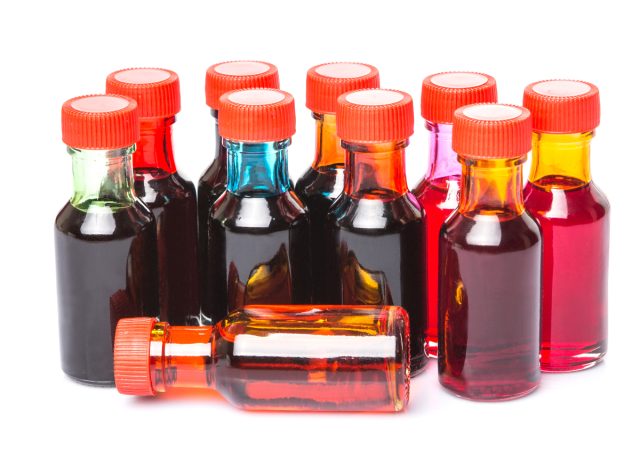Red 40, Yellow 5, and Yellow 6 are ingredients you may have noticed listed on your packet of candy, box of cereal, or favorite bottled sauce. In fact, these three food dyes account for 90% of dyes used in food products today. The vibrant colors from these dyes give food an appealing aesthetic, but at what cost?
There are conflicting claims and research on the topic of artificial colorings, some of which state these dyes may increase the risk of certain health issues. But are artificial colors really bad for you? Here is what you need to know.
Food dyes and colorings are not all created equally, and, in fact, while some countries allow the use of certain colors, other countries ban them. For example, Green No. 3 is approved by the FDA (Food and Drug Administration) and allowed in the U.S. but banned in Europe, and the same goes for other colorings allowed in Europe but not the U.S. While beta carotene and beet extract are natural forms of food colorings, the more common form of food dye used in food production today is petroleum-based.
One of the claims related to food dyes is they may cause hyperactivity in certain children, especially those who seem to be sensitive to the effects of these food dyes. While some studies have disproven this theory, other research suggests artificial food colorings may contribute significantly to some cases of attention-deficit/hyperactivity disorder (ADHD). There are other studies that note similar conclusions; however, governing agencies, like the FDA, have determined there is not enough conclusive evidence to deem food dyes unsafe. Some studies note the need for more research and larger sample groups in order to determine the impact of these artificial colors on conditions like ADHD.

While some food dyes appear to have conflicting research associated with them, others have firm negative outcomes. For example, in one animal study, male rats who were administered Red 3, one of the most controversial food colorings, had a higher incidence of thyroid tumors.
Outside of how the food dye itself impacts health, there is also concern over contaminants that can be found in the dyes as well. Benzidine, a known cancer-causing agent, can be found in Red 40, Yellow 5, and Yellow 6. While the amount of this contaminant is considered to be low enough in these dyes, there is concern over the accuracy at which the Benzidine is measured in these dyes. This could possibly mean there are higher amounts of contaminants in food dyes, making them more concerning for health.
Allergies are another concern related to artificial food colorings. Several pieces of research have noted allergic reactions to food dyes, including asthma and hives. And, for those who appear to be prone to hives and swelling, research indicates they may be more likely to have a reaction to certain food dyes.
There is still much to learn about the impact of food dyes and colorings. While much of the research in this area was done decades ago, more research is needed to assess the effects of artificial coloring in today's eating habits. Research indicates the consumption of food dyes has more than quadrupled since 1950, and that a drastic increase in consumption may be enough to result in different outcomes than previously seen in studies.
No comments:
Post a Comment